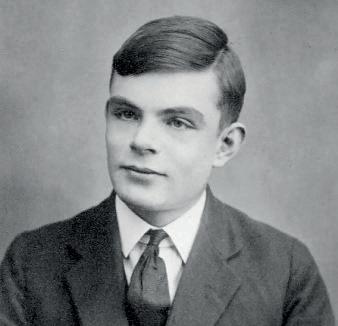
2 minute read
Alan Turing — The greatest mind of his age?
by Exeposé
Mark Waddington reflects on the life and work of Alan Turing
IN celebration of LGBTQ+ History Month this February, it is important to look back at some of history’s pioneering LGBT figures who have paved the way for the modern world. There are perhaps none more influential than Alan Turing, the famous computer scientist and mathematician, whose work in the Second World War cracking the Nazi Enigma code turned the war in favour of the Allied Powers. Turing’s contributions not only to the war but also to computer science and the advancement of technology have gone on to define the modern world. Despite Turing’s influence on the course of modern history, we must remember his unjust persecution for his sexuality that ultimately led to the untimely passing of one of Britain’s and the world’s greatest minds. While Turing’s death was and remains nothing short of a tragedy and a grim reminder of the very real prejudice that still continues to affect so many to this day, his loss serves as a reminder for society to become a kinder, more accepting place so that all may be accepted irrespective of their differences. In tribute to this great man, let us take a look at the life and achievements of Alan Turing.
Advertisement
Image: PxhereTURING’S CONTRIBUTIONS NOT ONLY TO THE WAR BUT ALSO TO COMPUTER SCIENCE AND THE ADVANCEMENT OF TECHNOLOGY HAVE GONE ON TO DEFINE THE MODERN WORLD
Graduating from King’s College, Cambridge, with a degree in Mathematics, and getting his PhD from Princeton University, Turing had rapidly gained a reputation for being a brilliant mathematician and logician. His ‘Turing Machine’ laid the groundwork for understanding of computation and is considered the foundation of modern computer science. While describing Turing’s machine is perhaps too difficult a task for an article designed to talk about his life as a whole, it is important to understand that this machine achieved an unprecedented feat for the time in establishing what the limits of computational and ultimately artificial intelligence are.

In 1950, Turing proposed his “Imitation Game” (the name later used for the 2014 biopic starring Benedict Cumberbatch about Turing’s life). Also known as the Turing Test, this test is a measure of a machine’s ability to exhibit intel ligent behav iour that is indistinguishable from a human.
The test works by having a human judge carry out a text-based conversa tion with both a human and a machine, with out knowing which is which. If the human judge is unable to reliably determine which is the human and which is the machine, the machine is said to have passed the Turing test and demonstrated human-like intelligence.
Most famously, during WW2, Turing led the way at Bletchley Park in codebreaking efforts to decipher the Axis Power line of communication. It was through the work of his team that a machine named the Bombe was created, which used a process of elimination to identify the settings of each day’s encryption settings for the Enigma code. Turing also was able to crack the German U-boat communications; up until Turing’s codebreaking, U-boats had been lurking in the Atlantic, sinking merchant vessels carrying essential resources to Britain. The work at Bletchley Park was invaluable to the Allied Powers’ victory in Europe and millions of lives were saved by the war being drastically shortened.
Despite Turing’s invaluable contributions to the war effort and receiving an OBE for his service after the war, Turing was arrested. After his house was burgled, Turing was forced to admit he was in a relationship with another man, with the police being far more concerned with the matter of his sexuality than that of the robbery. Turing was given a choice between prison, hormone therapy, or chemical castration. After accepting the latter, Turing was subjected to physical and mental humiliation. In 1954, Turing took his own life.
The loss of Turing cannot be understated and the untimely end to a brilliant mind still










